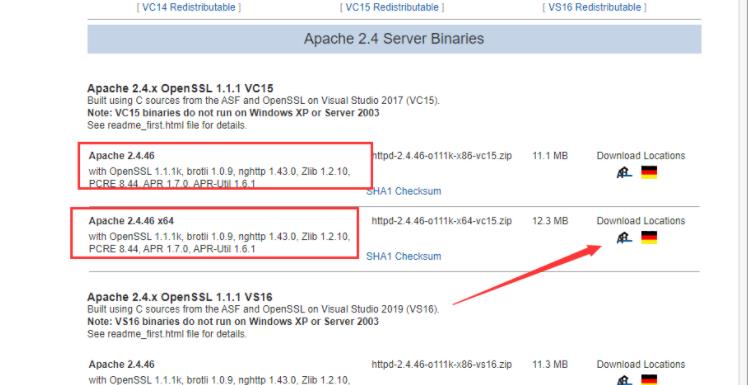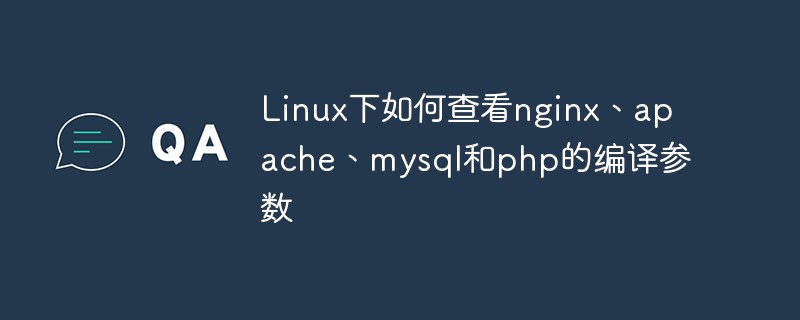Apache Shiro User Manual (2) Shiro Authentication
Authentication is the process of verifying user identity. During the authentication process, users need to submit entity information (Principals) and credential information (Credentials) to verify whether the user is legitimate. The most common "entity/credential" combination is the "username/password" combination.
1. Shiro authentication process
1. Collect entity/credential information
//Example using most common scenario of username/password pair: UsernamePasswordToken token = new UsernamePasswordToken(username, password); //”Remember Me” built-in: token.setRememberMe(true);
UsernamePasswordToken supports the most common username/password authentication mechanisms. At the same time, since it implements the RememberMeAuthenticationToken interface, we can set the "remember me" function through the token.
However, there is a difference between "remembered" and "authenticated":
Remembered users are only non-anonymous users, and you can obtain user information through subject.getPrincipals(). But it is not a fully authenticated user. When you access functions that require authenticated users, you still need to resubmit authentication information.
You can refer to the Amazon website for this difference. The website will remember logged-in users by default. When you visit the website again, for non-sensitive page functions, the remembered user information will be displayed on the page, but when you access the website account information Still need to log in again.
2. Submit entity/credential information
Subject currentUser = SecurityUtils.getSubject(); currentUser.login(token);
After collecting the entity/credential information, we can obtain the current user through the SecurityUtils tool class, and then submit the authentication by calling the login method.
3. Authentication processing
try {
currentUser.login(token);
} catch ( UnknownAccountException uae ) { ...
} catch ( IncorrectCredentialsException ice ) { ...
} catch ( LockedAccountException lae ) { ...
} catch ( ExcessiveAttemptsException eae ) { ...
} ... catch your own ...
} catch ( AuthenticationException ae ) {
//unexpected error?
}If the login method is executed without throwing any exception information, then the user authentication is considered passed. Afterwards, calling SecurityUtils.getSubject() anywhere in the application can obtain the currently authenticated user instance. Using subject.isAuthenticated() to determine whether the user has been authenticated will return true.
On the contrary, if the login method is executed If an exception is thrown, the authentication will be considered failed. Shiro has a rich set of distinct exception classes to describe the reasons for authentication failures, such as code examples.
2. Logout operation
The logout operation can delete your login information by calling subject.logout(), such as:
currentUser.logout(); //removes all identifying information and invalidates their session too.
After the logout operation is completed, Session The information will be cleared and the subject will be treated as an anonymous user.
3. Internal processing mechanism of authentication
The above is the processing process of Shiro authentication in the application. The internal processing mechanism of Shiro authentication will be explained in detail below.

As shown above, we use the authentication part of the Shiro architecture diagram to illustrate the internal processing sequence of Shiro authentication:
1. The application constructs an end-user authentication information After the AuthenticationToken instance, call the Subject.login method.
2. The instance of Sbuject is usually an instance object of the DelegatingSubject class (or subclass). When authentication starts, the securityManager instance set by the application is entrusted to call the securityManager.login(token) method.
3. After receiving the token information, SecurityManager will entrust an instance of the built-in Authenticator (usually an instance of the ModularRealmAuthenticator class) to call authenticator.authenticate(token). ModularRealmAuthenticator will set a or Multiple Realm instances are adapted, which actually provides a pluggable authentication mechanism for Shiro.
4. If multiple Realms are configured in the application, ModularRealmAuthenticator will perform the multi-Realm authentication process according to the configured AuthenticationStrategy (authentication strategy). After Realm is called, AuthenticationStrategy will respond to each Realm result.
Note: If only one Realm is configured in the application, Realm will be called directly without configuring the authentication policy.
5. Determine whether each Realm supports the submitted token. If so, Realm will call getAuthenticationInfo(token); the getAuthenticationInfo method is the actual authentication processing. We write our custom authentication processing by overriding Realm's doGetAuthenticationInfo method.
4. Processing mechanism using multiple Realm:
1. Authenticator
The default implementation is ModularRealmAuthenticator, which supports both single Realm and multiple Realm. If only one Realm is configured, ModularRealmAuthenticator will directly call the Realm to process the authentication information. If multiple Realms are configured, it will adapt the Realm according to the authentication policy and find the appropriate Realm to execute the authentication information.
Customize Authenticator configuration:
[main] ... authenticator = com.foo.bar.CustomAuthenticator securityManager.authenticator = $authenticator
2、AuthenticationStrategy(认证策略)
当应用程序配置了多个Realm时,ModularRealmAuthenticator将根据认证策略来判断认证成功或是失败。
例如,如果只有一个Realm验证成功,而其他Realm验证失败,那么这次认证是否成功呢?如果大多数的Realm验证成功了,认证是否就认为成功呢?或者,一个Realm验证成功后,是否还需要判断其他Realm的结果?认证策略就是根据应用程序的需要对这些问题作出决断。
认证策略是一个无状态的组件,在认证过程中会经过4次的调用:
在所有Realm被调用之前
在调用Realm的getAuthenticationInfo 方法之前
在调用Realm的getAuthenticationInfo 方法之后
在所有Realm被调用之后
认证策略的另外一项工作就是聚合所有Realm的结果信息封装至一个AuthenticationInfo实例中,并将此信息返回,以此作为Subject的身份信息。
Shiro有3中认证策略的具体实现:
AtLeastOneSuccessfulStrategy 只要有一个(或更多)的Realm验证成功,那么认证将被视为成功
FirstSuccessfulStrategy 第一个Realm验证成功,整体认证将被视为成功,且后续Realm将被忽略
AllSuccessfulStrategy 所有Realm成功,认证才视为成功
ModularRealmAuthenticator 内置的认证策略默认实现是AtLeastOneSuccessfulStrategy 方式,因为这种方式也是被广泛使用的一种认证策略。当然,你也可以通过配置文件定义你需要的策略,如:
[main] ... authcStrategy = org.apache.shiro.authc.pam.FirstSuccessfulStrategy securityManager.authenticator.authenticationStrategy = $authcStrategy ...
3、Realm的顺序
由刚才提到的认证策略,可以看到Realm在ModularRealmAuthenticator 里面的顺序对认证是有影响的。
ModularRealmAuthenticator 会读取配置在SecurityManager里的Realm。当执行认证是,它会遍历Realm集合,对所有支持提交的token的Realm调用getAuthenticationInfo 。
因此,如果Realm的顺序对你使用的认证策略结果有影响,那么你应该在配置文件中明确定义Realm的顺序,如:
blahRealm = com.company.blah.Realm ... fooRealm = com.company.foo.Realm ... barRealm = com.company.another.Realm securityManager.realms = $fooRealm, $barRealm, $blahRealm
以上就是Apache Shiro 使用手册(二)Shiro 认证的内容,更多相关内容请关注PHP中文网(www.php.cn)!
 图文详解apache2.4+php8.0的安装配置方法Dec 06, 2022 pm 04:53 PM
图文详解apache2.4+php8.0的安装配置方法Dec 06, 2022 pm 04:53 PM本文给大家介绍如何安装apache2.4,以及如何配置php8.0,文中附有图文详细步骤,下面就带大家一起看看怎么安装配置apache2.4+php8.0吧~
 Linux apache怎么限制并发连接和下载速度May 12, 2023 am 10:49 AM
Linux apache怎么限制并发连接和下载速度May 12, 2023 am 10:49 AMmod_limitipconn,这个是apache的一个非官方模块,根据同一个来源ip进行并发连接控制,bw_mod,它可以根据来源ip进行带宽限制,它们都是apache的第三方模块。1.下载:wgetwget2.安装#tar-zxvfmod_limitipconn-0.22.tar.gz#cdmod_limitipconn-0.22#vimakefile修改:apxs=“/usr/local/apache2/bin/apxs”#这里是自己apache的apxs路径,加载模块或者#/usr/lo
 apache版本怎么查看?Jun 14, 2019 pm 02:40 PM
apache版本怎么查看?Jun 14, 2019 pm 02:40 PM查看apache版本的步骤:1、进入cmd命令窗口;2、使用cd命令切换到Apache的bin目录下,语法“cd bin目录路径”;3、执行“httpd -v”命令来查询版本信息,在输出结果中即可查看apache版本号。
 超细!Ubuntu20.04安装Apache+PHP8环境Mar 21, 2023 pm 03:26 PM
超细!Ubuntu20.04安装Apache+PHP8环境Mar 21, 2023 pm 03:26 PM本篇文章给大家带来了关于PHP的相关知识,其中主要跟大家分享在Ubuntu20.04 LTS环境下安装Apache的全过程,并且针对其中可能出现的一些坑也会提供解决方案,感兴趣的朋友下面一起来看一下吧,希望对大家有帮助。
 nginx,tomcat,apache的区别是什么May 15, 2023 pm 01:40 PM
nginx,tomcat,apache的区别是什么May 15, 2023 pm 01:40 PM1.Nginx和tomcat的区别nginx常用做静态内容服务和代理服务器,直接外来请求转发给后面的应用服务器(tomcat,Django等),tomcat更多用来做一个应用容器,让javawebapp泡在里面的东西。严格意义上来讲,Apache和nginx应该叫做HTTPServer,而tomcat是一个ApplicationServer是一个Servlet/JSO应用的容器。客户端通过HTTPServer访问服务器上存储的资源(HTML文件,图片文件等),HTTPServer是中只是把服务器
 php站用iis乱码而apache没事怎么解决Mar 23, 2023 pm 02:48 PM
php站用iis乱码而apache没事怎么解决Mar 23, 2023 pm 02:48 PM在使用 PHP 进行网站开发时,你可能会遇到字符编码问题。特别是在使用不同的 Web 服务器时,会发现 IIS 和 Apache 处理字符编码的方法不同。当你使用 IIS 时,可能会发现在使用 UTF-8 编码时出现了乱码现象;而在使用 Apache 时,一切正常,没有出现任何问题。这种情况应该怎么解决呢?
 如何在 RHEL 9/8 上设置高可用性 Apache(HTTP)集群Jun 09, 2023 pm 06:20 PM
如何在 RHEL 9/8 上设置高可用性 Apache(HTTP)集群Jun 09, 2023 pm 06:20 PMPacemaker是适用于类Linux操作系统的高可用性集群软件。Pacemaker被称为“集群资源管理器”,它通过在集群节点之间进行资源故障转移来提供集群资源的最大可用性。Pacemaker使用Corosync进行集群组件之间的心跳和内部通信,Corosync还负责集群中的投票选举(Quorum)。先决条件在我们开始之前,请确保你拥有以下内容:两台RHEL9/8服务器RedHat订阅或本地配置的仓库通过SSH访问两台服务器root或sudo权限互联网连接实验室详情:服务器1:node1.exa
 Linux下如何查看nginx、apache、mysql和php的编译参数May 14, 2023 pm 10:22 PM
Linux下如何查看nginx、apache、mysql和php的编译参数May 14, 2023 pm 10:22 PM快速查看服务器软件的编译参数:1、nginx编译参数:your_nginx_dir/sbin/nginx-v2、apache编译参数:catyour_apache_dir/build/config.nice3、php编译参数:your_php_dir/bin/php-i|grepconfigure4、mysql编译参数:catyour_mysql_dir/bin/mysqlbug|grepconfigure以下是完整的实操例子:查看获取nginx的编译参数:[root@www~]#/usr/lo


Hot AI Tools

Undresser.AI Undress
AI-powered app for creating realistic nude photos

AI Clothes Remover
Online AI tool for removing clothes from photos.

Undress AI Tool
Undress images for free

Clothoff.io
AI clothes remover

AI Hentai Generator
Generate AI Hentai for free.

Hot Article

Hot Tools

PhpStorm Mac version
The latest (2018.2.1) professional PHP integrated development tool

MantisBT
Mantis is an easy-to-deploy web-based defect tracking tool designed to aid in product defect tracking. It requires PHP, MySQL and a web server. Check out our demo and hosting services.

SublimeText3 Linux new version
SublimeText3 Linux latest version

SecLists
SecLists is the ultimate security tester's companion. It is a collection of various types of lists that are frequently used during security assessments, all in one place. SecLists helps make security testing more efficient and productive by conveniently providing all the lists a security tester might need. List types include usernames, passwords, URLs, fuzzing payloads, sensitive data patterns, web shells, and more. The tester can simply pull this repository onto a new test machine and he will have access to every type of list he needs.

EditPlus Chinese cracked version
Small size, syntax highlighting, does not support code prompt function






